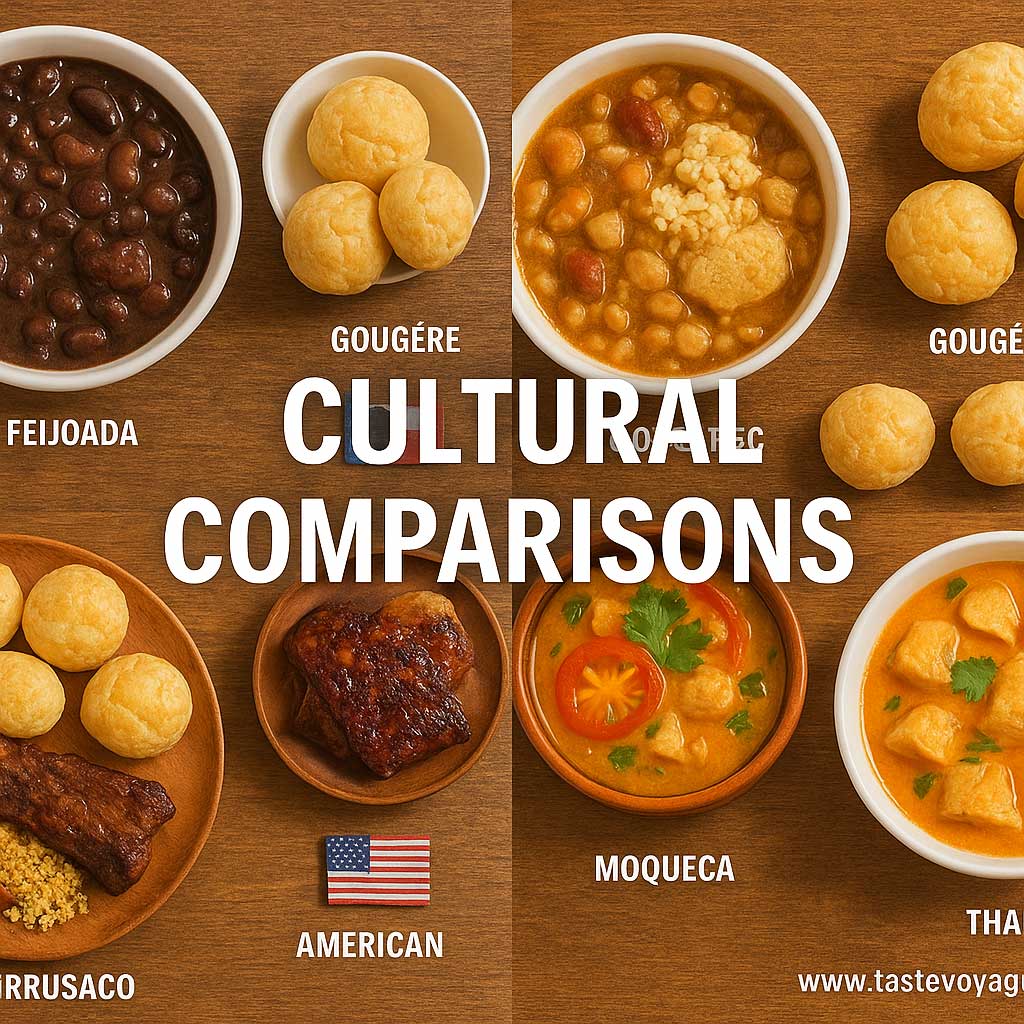Brazilian vs German Food: Traditions & Flavors Compared
Travel the World Through Food >> Brazilian Cuisine>>Cultural Comparisons>> Brazilian vs German Food: Traditions & Flavors Compared
Brazilian vs German Food: Traditions & Flavors Compared
Exploring the Richness of Brazilian and German Food Traditions
Cuisine is more than just a way to satisfy hunger; it is a vibrant expression of culture, history, and community. When we compare Brazilian and German food traditions, we discover two rich culinary worlds that highlight unique ingredients, flavors, and customs. Both cuisines offer a glimpse into their societies’ values and lifestyles, making them fascinating to explore and appreciate.
The Vibrancy of Brazilian Food Traditions
Brazilian Cuisine is a colorful tapestry woven with diverse influences. It celebrates a lively spirit through dishes that promote community and shared experiences. Staples like rice, beans, and fresh tropical fruits form the foundation of many traditional meals. The use of bold flavors, herbs, and spices reflects Brazil’s warm climate and abundant natural resources.
Popular foods such as feijoada, a hearty black bean Stew with meats, reveal the importance of family gatherings and communal dining. Similarly, dishes like acarajé, deep-fried balls filled with shrimp, showcase the vibrant street food culture. Brazil’s culinary scene is also known for its tropical fruits, including mangoes, passionfruit, and guava, which add sweetness and freshness to dishes and beverages. These elements highlight the country’s emphasis on celebration, warmth, and diversity.
The Heritage of German Food Traditions
German cuisine, on the other hand, is celebrated for its hearty and comforting dishes rooted in tradition. It emphasizes quality ingredients, simple preparation, and a sense of homecoming. Bread, sausages, and potatoes are fundamental components that have played a significant role in German food culture for centuries.
Traditional foods such as bratwurst, sauerkraut, and pretzels exemplify the country’s focus on craftsmanship and flavors that have stood the test of time. Meals often revolve around family gatherings and Seasonal celebrations, where dishes are enjoyed with a sense of familiarity and pride. German desserts, like apple strudel and Black Forest cake, add a touch of sweetness and elegance to the culinary landscape. The cuisine’s emphasis on preservation techniques, such as pickling and fermenting, reflects a culture that values sustenance and resourcefulness.
The Cultural Significance of Food in Both Traditions
Both Brazilian and German food traditions serve as more than nourishment; they are vital expressions of identity and community. In Brazil, food fosters a sense of joy and togetherness, often centered around lively festivals and family reunions. The use of fresh, local ingredients underscores a deep connection to nature and regional flavors.
In Germany, food embodies stability, craftsmanship, and a respect for heritage. Traditional recipes are passed down through generations, creating a sense of continuity and belonging. Celebratory meals and seasonal dishes reinforce bonds within families and communities.
Appreciating the Culinary Significance
Understanding the culinary significance of Brazilian and German food traditions enriches our appreciation of these cultures. Brazilian dishes showcase a joyful, diverse spirit rooted in natural abundance. German cuisine offers comfort, resilience, and a respect for tradition. Both cuisines, in their unique ways, highlight the importance of food as a cultural anchor.
In exploring these culinary worlds, we gain insight into how food shapes identity, brings people together, and preserves history. Whether savoring the spicy warmth of a Brazilian feijoada or enjoying a hearty German bratwurst, we celebrate the beauty and depth of these enduring traditions.
Final Thoughts
Brazilian and German food traditions complement each other by illustrating different ways that cuisine reflects cultural values. Each offers a window into the soul of its people, celebrating life through flavors, ingredients, and shared experiences. Embrace these culinary worlds, and let them inspire your appreciation for the rich diversity of global food culture.
